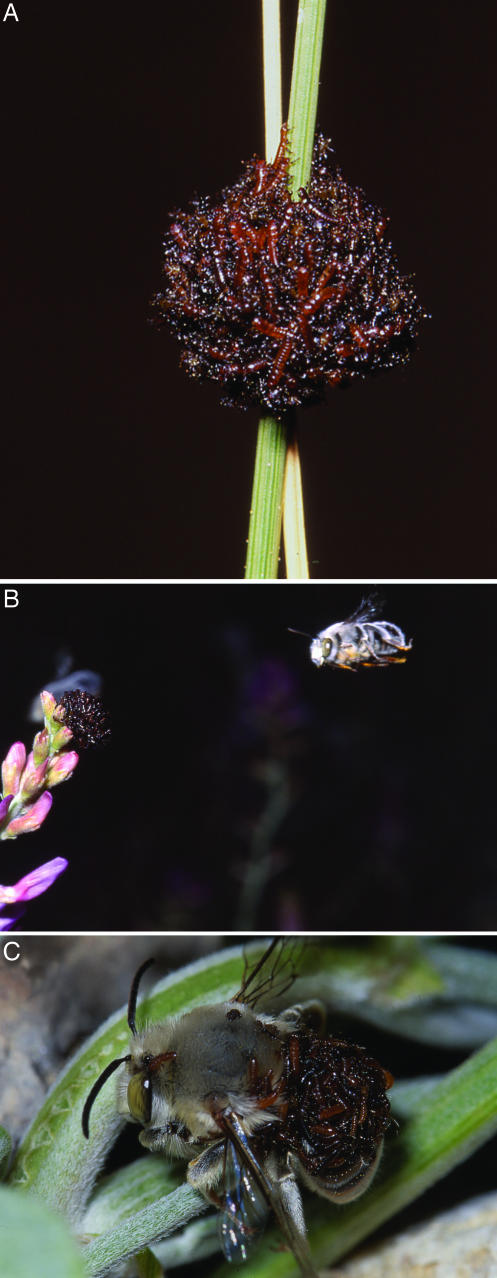Fig. 1.
Three steps in the Habropoda–Meloe aggressive mimicry system. (A) A typical aggregation of M. franciscanus triungulins on a grass blade. Aggregations average 6.9 ± 2.8 mm in diameter (range, 2–15 mm; mode = 10; n = 153). Of 153 triungulin aggregations measured, 55% were ≥7 mm. (B) A male H. pallida bee inspecting an M. franciscanus triungulin aggregation on the branch tip of the dune plant A. lentiginosus var. borreganus. (C) A male bee covered with M. franciscanus triungulin larvae on the dorsum.

